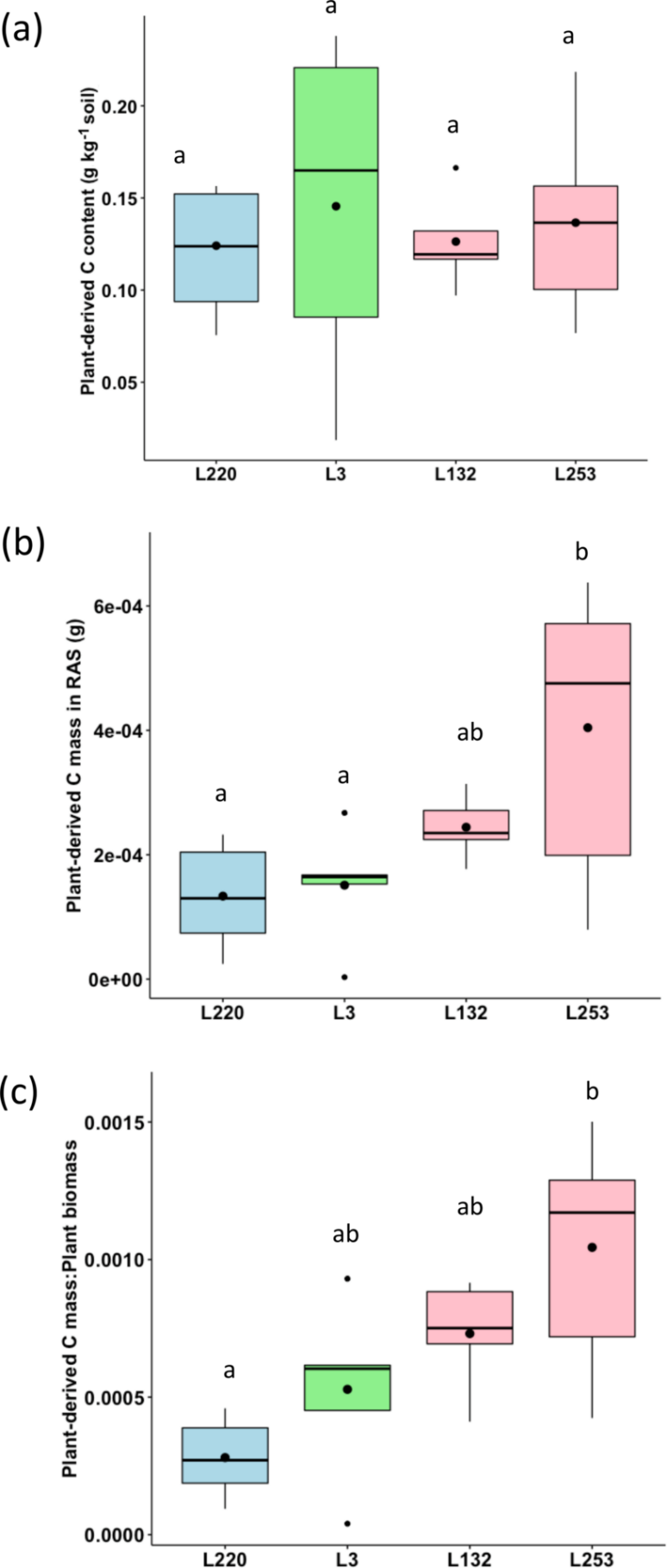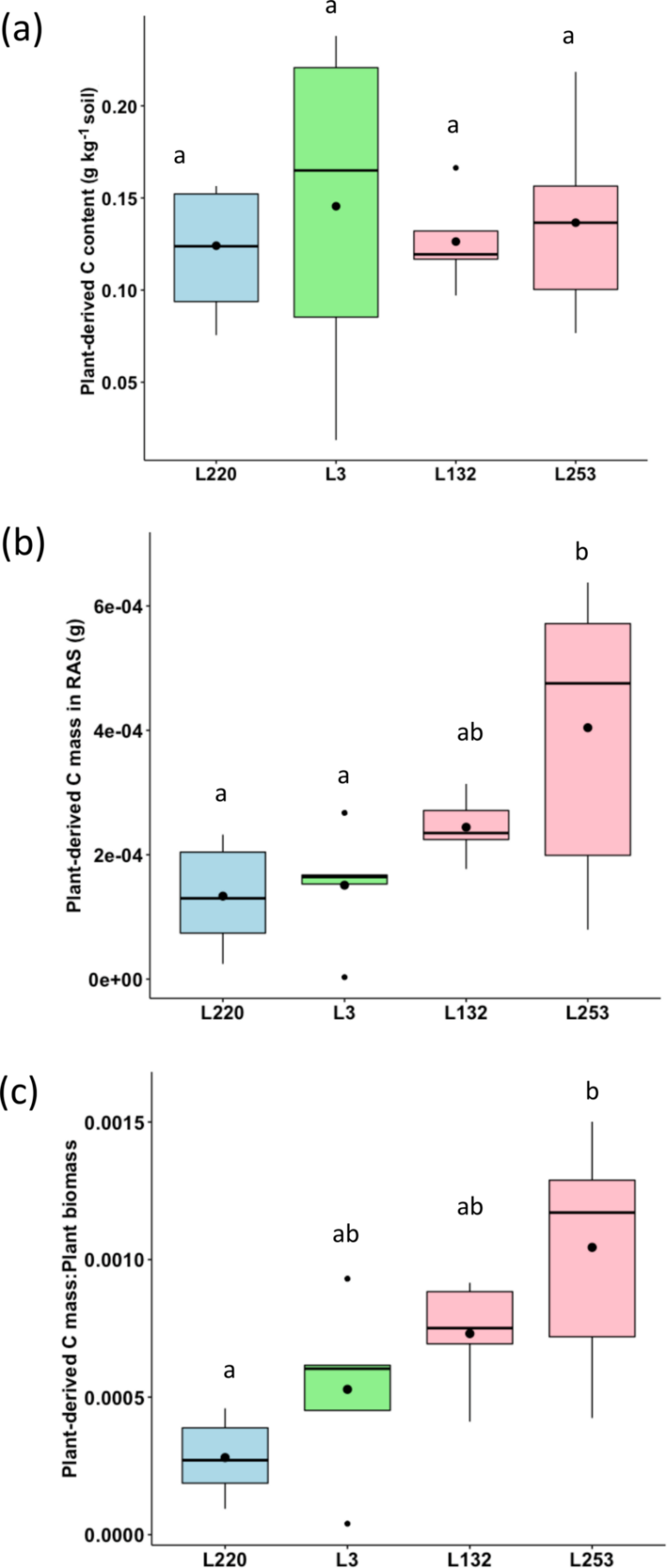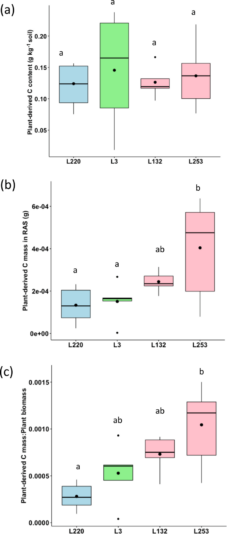Sitor Ndour P. M., Hatté C., Achouak W., Heulin T., Cournac L.
Cette étude contribue à l’initiative internationale 4‰ visant à gérer les sols pour la sécurité alimentaire et le climat. Elle souligne que le stockage du carbone doit être compris dans le temps et pas seulement comme une augmentation à court terme de la teneur en carbone du sol. La perte de carbone initialement présent dans le sol par l’ajout de nouveau carbone énergétique (effet d’amorçage) doit être minimisée. Cet effet d’amorçage, qui n’est pas visible en surveillant simplement la teneur en carbone du sol, peut être facilement évalué en mesurant le 14C et le 13C.
La taille de la rhizosphère varie considérablement en fonction du génotype de la culture, et l’exsudation des racines est l’un de ses facteurs déterminants. L’élucidation des relations entre la formation de la rhizosphère, l’exsudation des racines et la dynamique du carbone dans le sol peut ouvrir des perspectives intéressantes en termes de sélection des cultures en vue d’une agriculture durable. Nous avons cultivé quatre lignées consanguines de millet perlé (type de plante C4 : d13C de -12,8 ‰, F14C=1,012) présentant des tailles de rhizosheath contrastées dans un type de sol C3 (matière organique avec d13C de -22,3 ‰, F14C=1,045). Nous avons échantillonné le sol adhérant aux racines (RAS) et le sol en vrac après 28 jours de croissance dans des conditions semi-contrôlées. La teneur en carbone organique du sol (SOC) et les d13C et F14C des échantillons de sol ont été mesurés et la quantité de C dérivé de la plante et le rapport Clost = Cnew dans le RAS ont été calculés.

Les résultats ont montré une augmentation significative du d13C dans les RAS des quatre lignées de millet perlé par rapport au sol témoin, ce qui suggère que cette approche a permis de détecter l’apport de C végétal dans le sol à un stade précoce de la croissance du millet perlé. La concentration de C dérivé de la plante dans les RAS n’a pas varié de manière significative entre les lignées de millet perlé, mais la quantité absolue de C dérivé de la plante a varié de manière significative lorsque nous avons pris en compte la masse des RAS de ces différentes lignées. En utilisant un modèle conceptuel et les données des mesures des deux isotopes du carbone, nous avons mis en évidence un effet d’amorçage pour toutes les lignées de millet perlé. Il est important de noter que l’amplitude de l’effet d’amorçage (Clost = ratio Cnew) était plus élevée pour la lignée à petite rhizosheath (faible agrégation) que pour celles à grande rhizosheath (forte agrégation), ce qui indique un meilleur potentiel de séquestration du C pour ces dernières.
Référence: Sitor Ndour P. M., Hatté C., Achouak W., Heulin T., Cournac L., 2022. Rhizodeposition efficiency of pearl millet genotypes assessed on a short growing period by carbon isotopes (d13C, F14C). Soil 8, 49-57 – doi: 10.5194/soil-8-49-2022
Financé par le projet CarbonSeq du CEA/DRF-IMPULSION et une bourse MOPGA pour le premier auteur.



